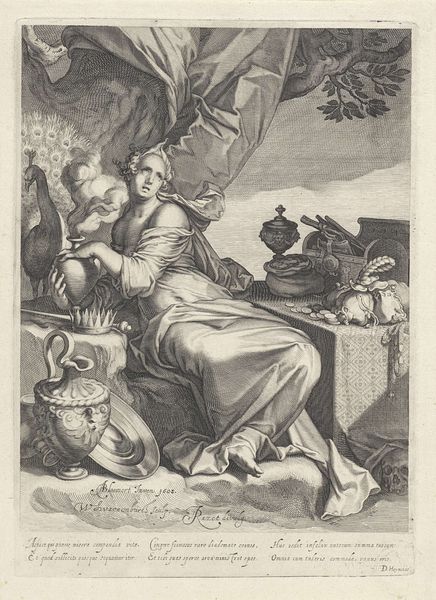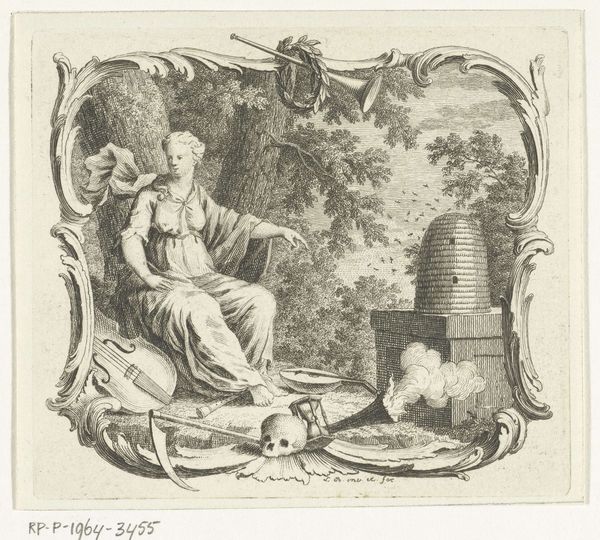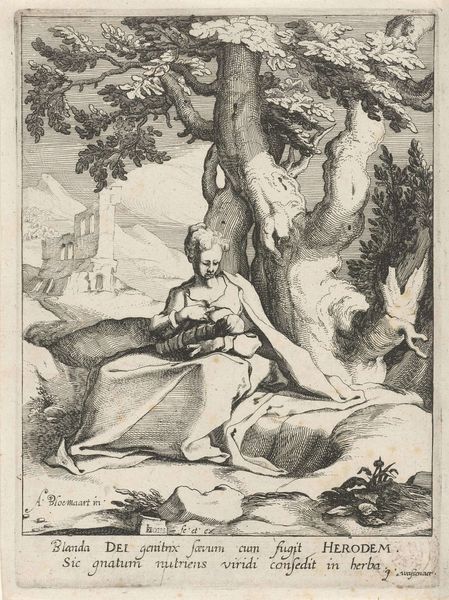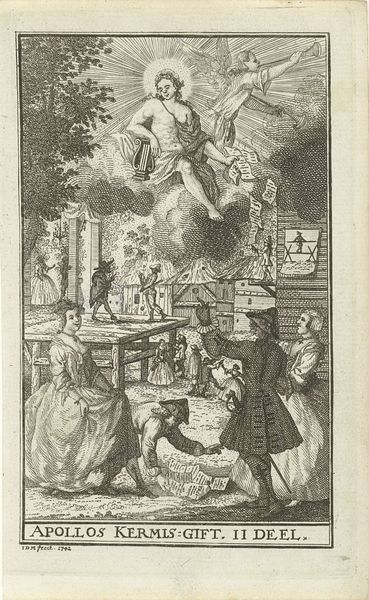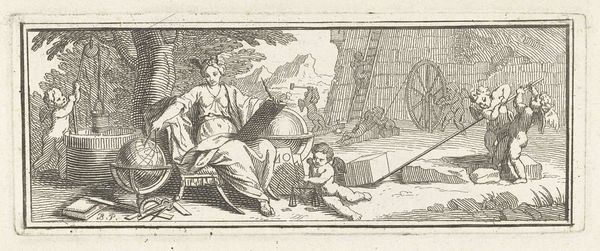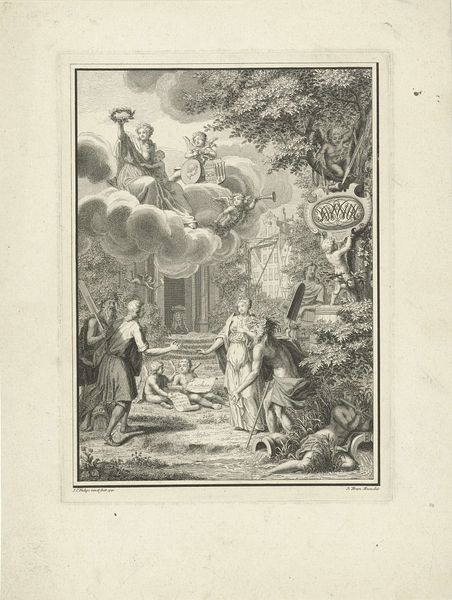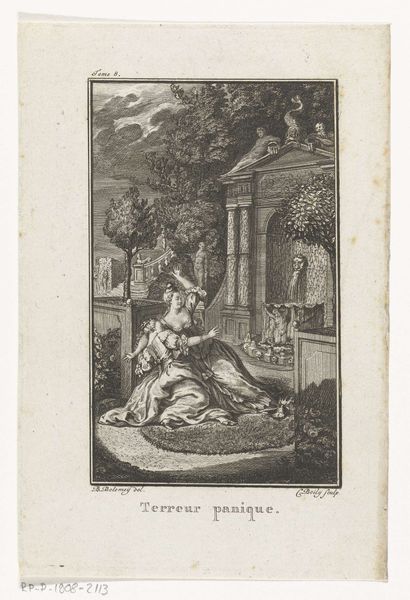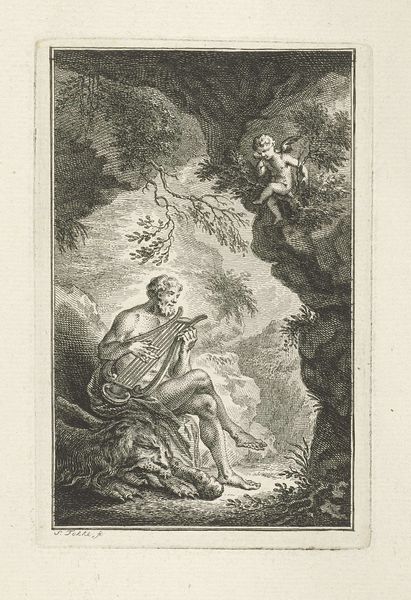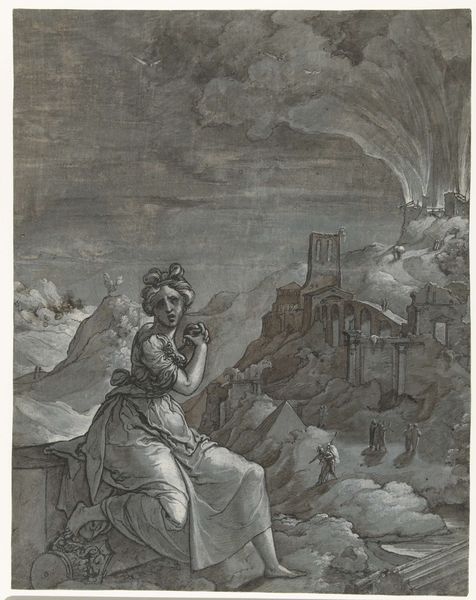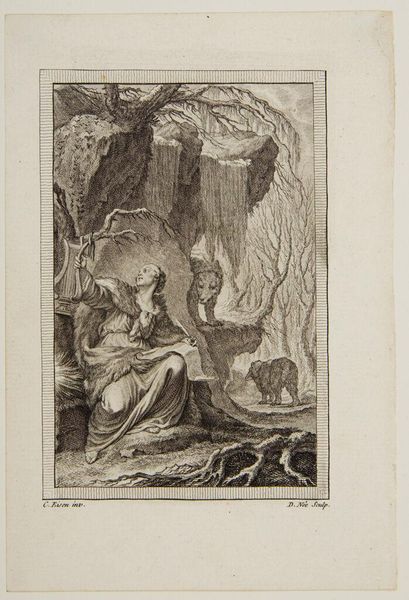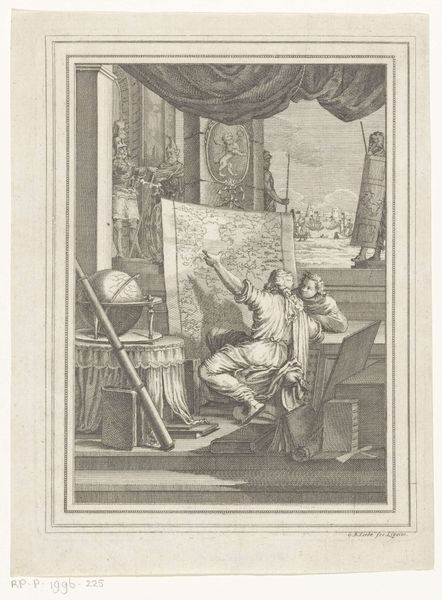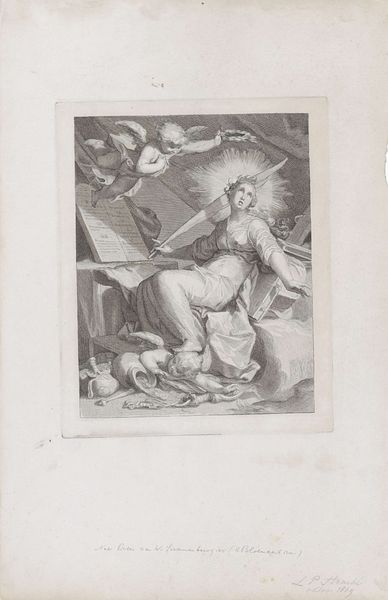
engraving
#
portrait
#
allegory
#
baroque
#
old engraving style
#
landscape
#
figuration
#
old-timey
#
line
#
history-painting
#
engraving
Dimensions: height 166 mm, width 105 mm
Copyright: Rijks Museum: Open Domain
This allegorical print was made by Jan Punt around the mid-18th century. It is made from an engraving, a printmaking process that involves incising an image onto a metal plate, which is then inked and pressed onto paper. What I find particularly striking about this method is the way that the material itself—the metal plate—dictates the aesthetic. Notice the fine, precise lines that define the forms. This is a direct result of the engraver's skill in manipulating the burin, the tool used to cut into the metal. The precision allows for a high level of detail, but it also imposes a certain formality. Consider the social context: printmaking at this time was entering an industrial age, and it allowed images and ideas to spread quickly, to a larger audience. The print has an allegorical meaning but the engraving, while skilled, is repeatable. Therefore, this print operates in the space between art object and commodity. By appreciating the material and process, we can see beyond the image itself, gaining insights into the cultural and economic forces at play.
Comments
No comments
Be the first to comment and join the conversation on the ultimate creative platform.
